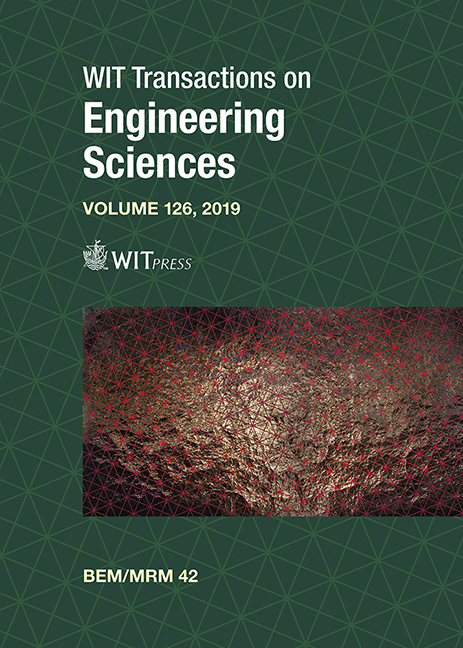MESH-FREE ANALYSIS OF PLATE BENDING PROBLEMS BY MOVING FINITE ELEMENT APPROXIMATION
Price
Free (open access)
Transaction
Volume
126
Pages
13
Page Range
211 - 223
Published
2019
Size
442 kb
Paper DOI
10.2495/BE420191
Copyright
WIT Press
Author(s)
VLADIMIR SLADEK, JAN SLADEK, MIROSLAV REPKA
Abstract
The governing equations for plate bending problems are given by the partial differential equations of the 4th order. Therefore C1 continuous elements are required for approximation and discretization with using the standard finite element method (FEM). A novel discretization method is proposed and developed for numerical solution of plate bending boundary value problems. In contrast to the standard FEM, the analysed domain is not covered by a mesh of fixed non-overlapping finite elements, but only a net of nodes is used for discretization. Around each node, there is properly created a Lagrange finite element and the spatial variation of field variables is interpolated within this element in terms of nodal values and polynomial shape functions defined in the intrinsic coordinate space of the finite element. Thus, the Lagrange finite element associated with a node is moving within the analysed domain from node to node. Since there are no element interfaces known in standard FEM with a fixed finite element mesh, the difficulties with continuity of derivatives of field variables on such interfaces are avoided and higher order derivatives are available within the moving finite element. This makes the moving finite element (MFE) approximation to be applicable also to the development of the strong formulation of a boundary value problem with collocation of both the governing equations and boundary conditions at interior and boundary nodes, respectively. To decrease the order of the polynomial interpolation, the original set of the governing PDE is decomposed into a system of 2nd order PDEs by introducing a new field variable. Then, the boundary conditions are to be modified and the bi-quadratic Lagrange finite element is sufficient for approximation. Both the strong and the local weak formulations are derived and employed in the numerical test examples with focusing on verification of the reliability (accuracy and stability) and efficiency of the new method.
Keywords
Lagrange finite element, strong and weak formulation, convergence and accuracy, numerical stability, computational efficiency





